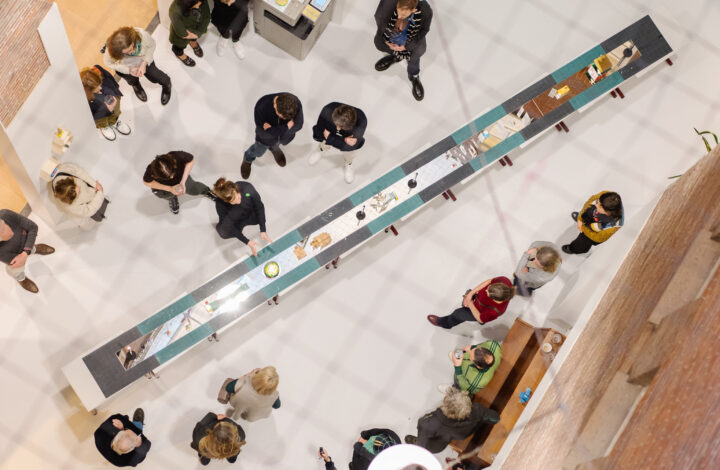
Cecilia Hendrikx: Investigating Architecture, History and Power
23 June 2025Hendrikx explores how the history of these buildings continues to influence their use and perception today. Central to her research is the ‘surtout de table’: ornate table centrepieces from the 17th and 18th centuries that served as status symbols and storytellers—representations of power and authority.
A surtout de table is a richly decorated gold or silver object that was placed on dining tables at official occasions. These ornamental pieces became popular amongst affluent society in the 18th century—Napoleon, for example, gave a surtout to his stepson to display at diplomatic dinners. They are still used at royal banquets today. Historically, these pieces symbolised power, evolving during the Renaissance into intricate architectural designs with references to antiquity. Their design often resembled piazzas, which represented order and authority.
Hendrikx brings this historical art form to life by using the surtout de table as a contemporary ‘conversation piece’. In doing so, she renders the history and architecture of the buildings, as well as the role of the institutions housed within them, tangible and open to discussion.
Through her work, she establishes a connection between history and the present day. Her aim is to spark conversation: Is the current use of the building really so self-evident? And why do people use the building in this particular way?
It is fitting that she conducts this research at NIAS and the Academy of Arts: ‘I believe that the intersection of art, science and history offers valuable insights.’
An architectural approach
Her methodology involves carefully studying the building’s architecture and visual details: from plants and ceiling decorations to lamps and ornaments. She investigates the meaning of these elements and what they convey. ‘I don’t just look at the past,’ she says, ‘but also involve everyone who currently works in or uses the building, from researchers to staff and suppliers.’
This approach reveals the complex social and historical layers embedded in the buildings. Hendrikx’s method is well suited to monumental structures with layered pasts—such as the Spinhuis and the Oost-Indisch Huis, which currently houses NIAS—but can also be applied to other types of architecture. She has previously explored this method in settings ranging from the 19th-century school building of the Reinwardt Academy to the modernist villa Huis van Gelderen.
Contemporary Models of Power
Hendrikx records her observations in contemporary surtouts de table, which visualise specific periods in the history of institutions. She creates these contemporary versions using elements she finds on location, approaching them as a kind of construction kit. As with historical surtouts, the basis is a mirror.
‘My surtouts de table are models that reflect the size, environment and meaning of an organisation, bringing together social and historical layers,’ Hendrikx explains. ‘I don’t use this art form to exercise power, but to undermine its original purpose—by thinking about the power structures that still influence our world today.’
She adds: ‘A surtout can also be beautiful or entertaining, with room for the intangible, such as a vision or a dream.’
This represents a fresh interpretation of a centuries-old art form, one that challenges rather than reinforces traditional hierarchies whilst creating space for contemporary dialogue about institutional power and purpose.

More about the Artist in Residence Fellowship
More about Cecilia Hendrikx
This article previously appeared in Dutch on the website of the Akademie van Kunsten (Academy of Arts).
Text by Eliza Jordaan (Akademie van Kunsten), translated by Klaartje Laan (NIAS), photo’s by Almicheal Fraay.



